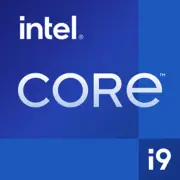Intel Core i9-7980XE Extreme Edition

インテル Core i9-7980XE エクストリーム エディション: 伝説の18コアモンスターへのガイド (2025)
更新日: 2025年4月
主な仕様: アーキテクチャ、プロセス技術、ユニークな特徴
2017年に発売されたインテル Core i9-7980XEは、エンスージアストにとってアイコニックなソリューションです。古さにもかかわらず、18コアと36スレッドは特定のタスクに対して依然として有効です。
アーキテクチャとプロセス技術
- コードネーム: Skylake-X
- プロセス技術: 14nm(最適化されたインテル14nm++)
- ベースクロック: 2.6 GHz、Turbo Boostで最大4.4 GHz(Turbo Boost Max 3.0)
- キャッシュ: 24.75 MB L3、コアごとに1 MB L2
主な特徴
- オープンマルチプライヤー: 手動オーバークロックが可能
- インテル Optane メモリーおよびAVX-512のサポート
- 44本のPCIe 3.0レーン — 複数のGPUやNVMeストレージを接続可能
性能
Cinebench R23のテストでは、7980XEはシングルスレッドモードで約3400ポイント、多スレッドで最大32000ポイントを記録します。比較すると、現代のCore i9-14900K(24コア)はマルチスレッドで約28000ポイントを獲得しますが、6 GHzまでのクロックによってシングルスレッドタスクで勝っています。
対応マザーボード: ソケット、チップセット、選び方のコツ
ソケット: LGA 2066 — HEDT(ハイエンドデスクトップ)向けの特化プラットフォーム
チップセット
- インテル X299: 唯一の選択肢。オーバークロックやGPUの多スレッド構成(NVLink/SLI)、最大128 GBのDDR4をサポート。
推奨モデル
- ASUS ROG Rampage VI Extreme — オーバークロッカーに人気(2025年の価格: ~$450。見つけられれば)
- MSI X299 Gaming Pro Carbon AC — 価格と機能のバランスが良い(約$300)。
選ぶ際の特徴
- VRMモジュール: 安定したオーバークロックのために最低8フェーズが必要。
- VRMの冷却: 負荷時にチップセットが熱くなるため、ヒートパイプ付きのヒートシンクが必須。
- ポート: USB 3.2 Gen2、Thunderbolt 3(追加コントローラー経由)、2~3のM.2スロットを持つボードを探すこと。
サポートされるメモリ: DDR4と制限
- タイプ: DDR4のみ(DDR5はサポートされていません)
- クロック周波数: 公式には最大2666 MHzですが、オーバークロックにより最大3600 MHzまで(マザーボードとメモリチップによる)。
- 構成: 4または8チャンネルモード(ほとんどのX299ボードは4チャンネル)。
実際の例
G.Skill Trident Z RGB(4x16 GB、3200 MHz)をベースにした構成は、2666 MHzと比較してレンダリングで最大12%の向上を示します。
電源ユニット: 電力計算と推奨
プロセッサのTDP: 165Wですが、オーバークロック時(すべてのコアで最大4.6 GHz)には300Wに達します。
推奨
- 最低: 850W(RTX 4080クラスのGPUを1枚使用するPC向け)。
- 最適: 1000〜1200W(2x GPU、RAIDアレイ、周辺機器用)。
- 認証: 80+ GoldまたはPlatinum(Corsair HX1200、Seasonic PRIME TX-1000)。
重要! 高いリップルを持つ安価な電源は、多スレッド負荷において不具合を引き起こすことがあります。
i9-7980XEの長所と短所
長所
1. マルチスレッドパワー: 36スレッドはレンダリング、コードコンパイル、仮想化に有効。
2. スケーラビリティ: 4チャネルメモリと44 PCIe 3.0レーンのサポート。
3. オーバークロックの可能性: 熟練者は液体窒素で4.8 GHzまでオーバークロックします。
短所
1. 電力消費: オーバークロック時にシステムが500W以上消費する可能性あり。
2. 古くなったプラットフォーム: PCIe 4.0/5.0、DDR5、USB4未対応。
3. 価格: 2025年に新しいものは$1500〜2000(見つかれば)。
使用シナリオ: i9-7980XEがまだ輝く場所
1. ワークステーション
- 3Dレンダリング(Blender、V-Ray): 18コアが複雑なシーンのレンダリング時間を短縮。
- 8Kビデオ編集: Premiere ProやDaVinci Resolveでプロキシエンコーディングをバックグラウンドで実行。
2. 仮想化
5〜7台の仮想マシンを同時にラグなしで起動(例: 分離環境でのソフトウェア開発)。
3. ゲーム
- ストリーミング: OBSでのCPUエンコードはFPSにほとんど影響しない。
- マルチスレッドを重視したゲーム(Civilization VI、Microsoft Flight Simulator 2024) - 4Kで安定した60+ FPSを維持。
しかし! CS2やCyberpunk 2077ではRTX 4090と比較して、低いIPC(サイクルあたりの命令数)により、現代のCore i9-14900Kに対して15〜20%不利です。
競合他社: 2025年に比較するべき製品は?
1. AMD Ryzen Threadripper 1950X (2017): 16コア、約$1000。マルチスレッドパフォーマンスでは劣りますが(Cinebench R23で約25000)、価格が安い。
2. AMD Threadripper 3970X (2019): 32コアで、価格は$2000以上。最高の性能を求める人向け。
3. Intel Core i9-13900KS (2023): 24コア(8P+16E)、IPCが向上したが、LGA 1700ソケットに制限。
結論: 7980XEはすでにX299プラットフォームを持っている人や、プラットフォームを変えずにアップグレードを希望する人にとって良い選択です。
ビルドのヒント
1. 冷却
- 液冷: Arctic Liquid Freezer II 420(420mmラジエータ)
- エアクーラー: Noctua NH-D15(LGA 2066用にマウントを交換)
2. ケース
- 最低限: Lian Li PC-O11 Dynamic(優れた通気性)
- 理想的: Thermaltake Core WP100(E-ATXと液冷サポート)
3. 追加物
- Thermal Grizzly Kryonautのサーマルペースト。
- VRMの冷却用の追加ファン。
最終的な結論: 2025年にi9-7980XEが向いている人は?
このプロセッサは以下の条件で検討されています:
- すでにX299マザーボードを持っているが、マザーボードを交換せずにアップグレードが必要。
- マルチスレッドアプリケーションで作業しているが、DDR5/PCIe 5.0への移行を考えていない。
- 実験のためのレアな「オールドスクール」HEDT PCが欲しい。
ゲーマーや一般ユーザーには最適とは言えません: 現代のCore i7/i9 13〜14世代やRyzen 7000/8000がより優れた電力効率とシングルスレッド速度を提供しています。
もし2025年に新しいi9-7980XEを見つけたら、それはレアものです。しかし、ニッチなタスクには、いまだそのパワーで驚かせる能力があります。インテルがHEDTセグメントで支配的だった時代を思い出させます。
基本
CPUの仕様
メモリ仕様
その他
ソーシャルメディアで共有する
または当サイトへのリンクを追加
<a href="https://cputronic.com/ja/cpu/intel-core-i9-7980xe-extreme-edition" target="_blank">Intel Core i9-7980XE Extreme Edition</a>